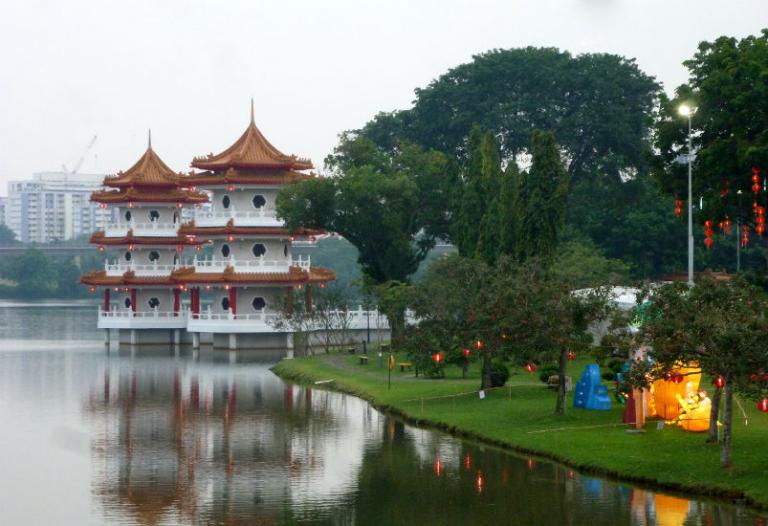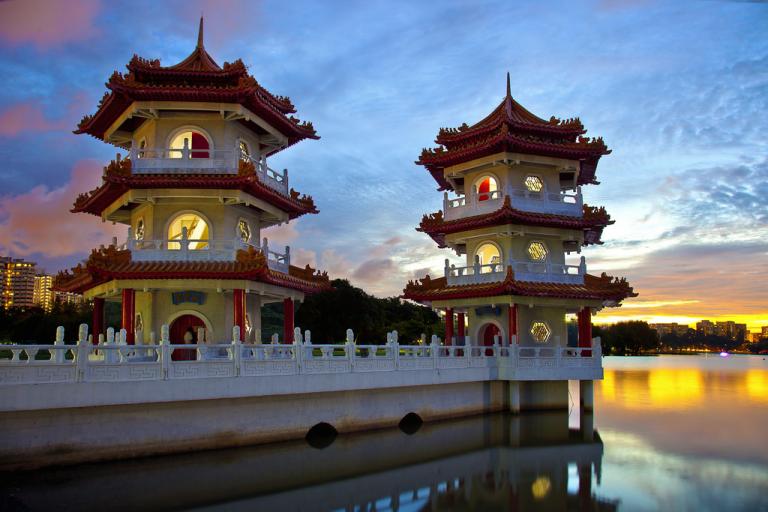Ancient Chinese architecture and gardens
3 min readAncient Chinese architecture enjoyed a long history and great achievements,and created many architectural miracles such as the Great Wall.In the process of its development,superior architectural techniques and artistic designs were combined to make unique Chinese architecture one of the greatest architectural systems.

Development of Chinese Architecture
In the Paleolithic Age,men lived on fishery and hunting,and were shelteredin trees and caves.In the Neolithic Age,men engaged in raising animals and farming,and settled down by digging caves or building simple houses with twigs and lumber,thus commencing their architectural activities.During its 2,000 years of feudal society,ancient Chinese architecture gradually formulated its unique system,coupled with considerable progress in urban planning,garden design,and house construction technique.In the 3rd century BC,the First Emperor of the Qin Empire mobilized the resources of the country to do construction work on a massive scale,including E’Pang Palace,the Emperor’s Mausoleum,the Great Wall and the Dujiangyan Water-conservancy Project. In the later dynasties,many more massive construction works of lasting fame were carried out.
The Han Dynasty spanned more than 400 years.It was a thriving period for architecture.
There are an abundance of historical records of that period,and many relics have been discovered,including coffin chambers and tomb aisles,showing traces of the architectural work.
In the Wei and Jin Period and Southern and Northern Dynasties,the growth of Buddhism provided a huge impetus for the construction of palaces and temples.Technologicaly,Greco-Buddhist Style took the place of the Han style,with decorations and engravings of flowers and trees,birds,beasts and humans.2 Many remarkable grottoes,Buddhist pagodas and imperial mausoleums were constructed in this period.
In the Sui and Tang Dynasties,the capital was established at Chang’an,and large-scale civil constructions were launched.When Tang succeeded Sui,with its political stability,both Buddhism and Taoism thrived and palaces and temples were constructed actively,marking the prime of the Chinese architectural art.But in the rebellions before the middle Tang Dynasty,a greater part of the architecture,particularly the brick-stone pagodas,was demolished.The stone-arch bridges in Sui and the wood-framed Buddhist temples in the late Tang are the most treasured relics in this period.The architecture in the Tang Dynasty had a robust style and a refined technique,presenting an imposing sight.
The architecture in the early phase of the Five-Kingdoms-Song-Liao-Jin Period was magnificent and intricate,but since the middle of the Song Dynasty it tended to be slim and fragile.The Song,Liao and Jin Dynasties all stressed constructing palaces.The palaces have been nearly all destroyed.But many temples have remained and spread all over the northern provinces.Particularly,the pagodas and stone steles were constructed with a high standard and with fine workmanship.A book titled A Treatise on Architectural Methods was written in that period,an important historical document on architectural changes in various periods.
The Yuan,Ming and Qing Dynasties all established their capitals at Beijing.The scale of the imperial palaces and the constructions amazed the world.The style of the construction followed the ancient tradition.But the introduction of the Tibetan and Western architectural styles influenced the traditional standards.Western architecture style began to appear in the bigger cities.
Nowadays,traditional architectural activities have slowed down and more Western factors have begun to show up.









